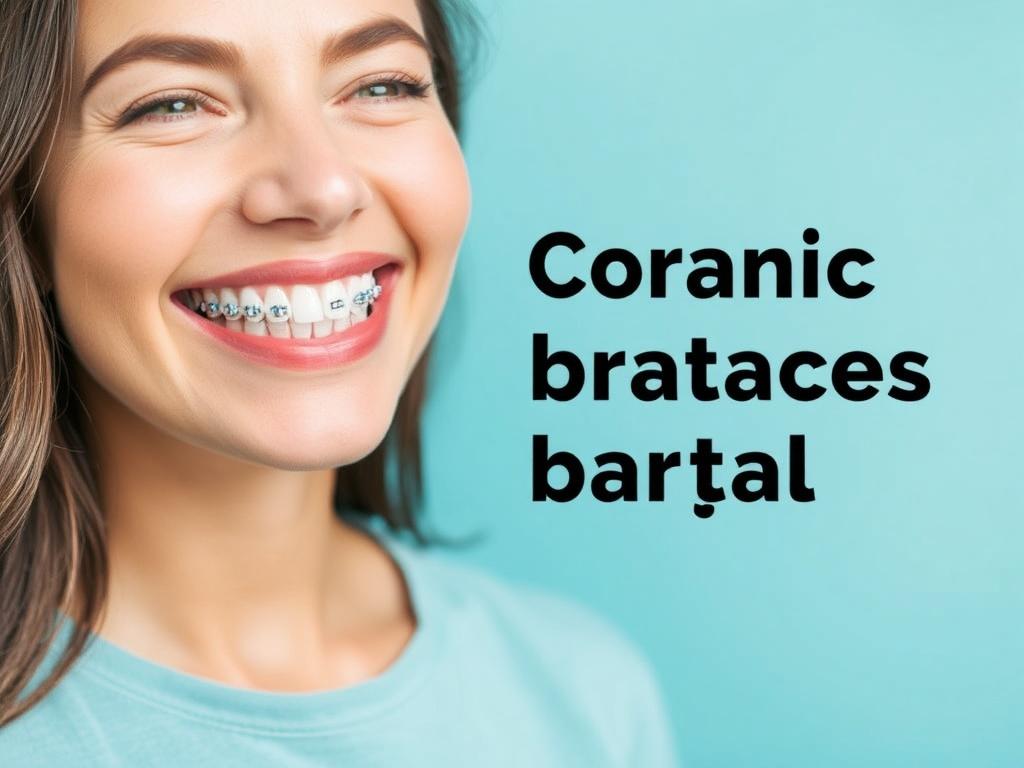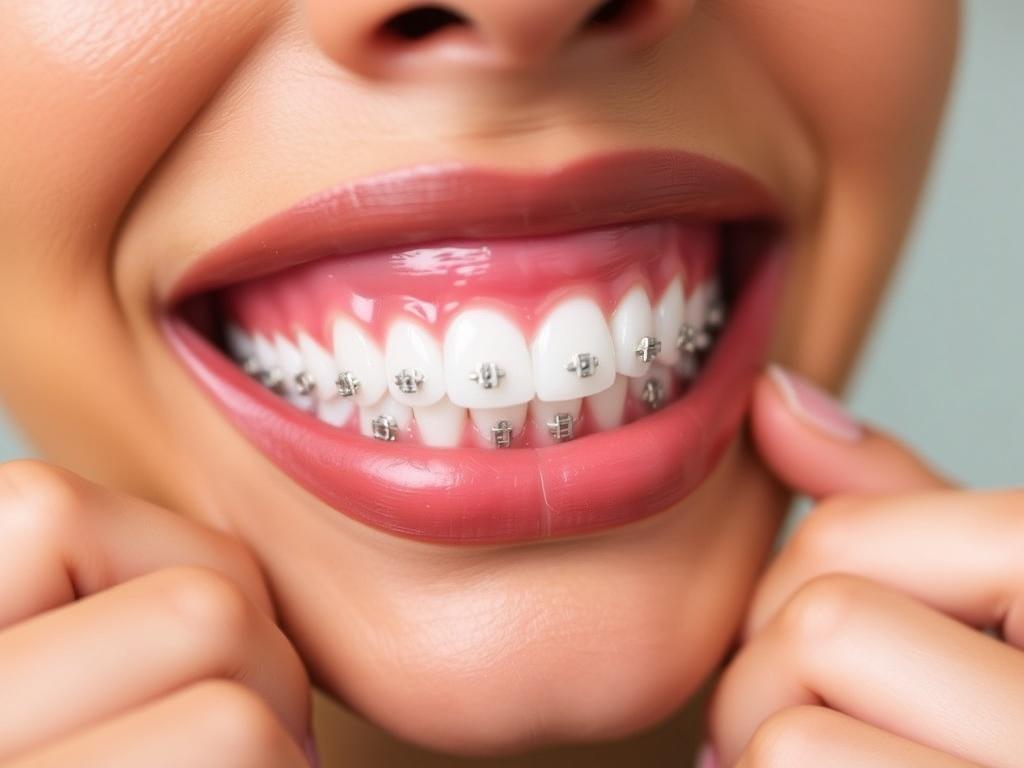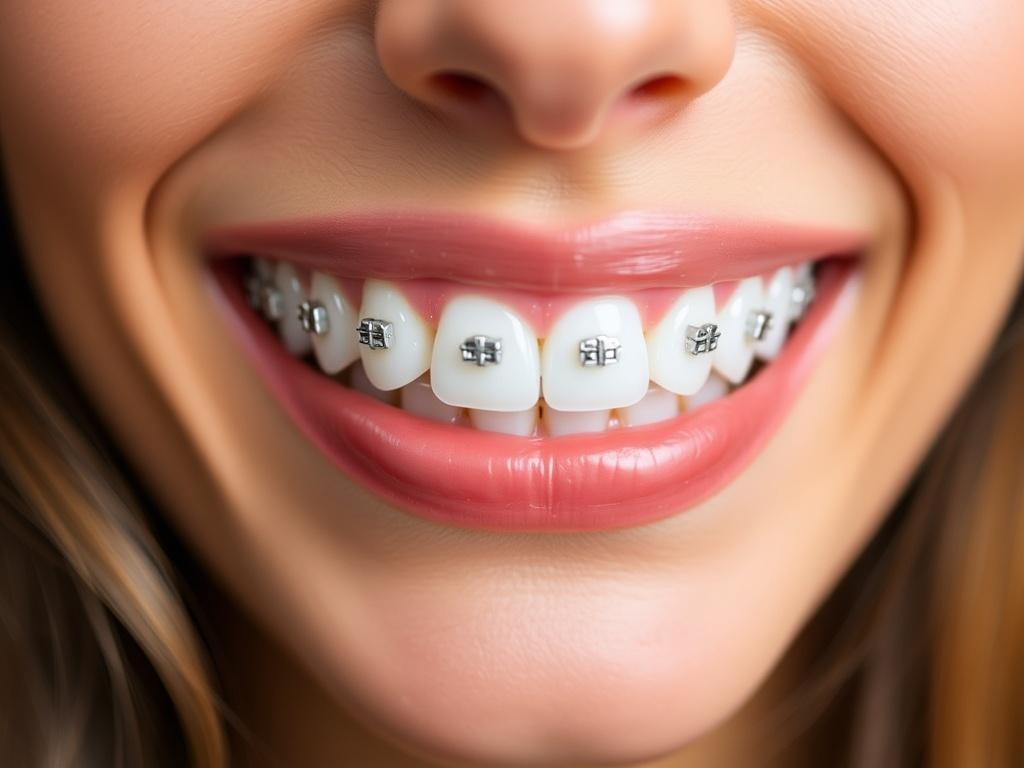When it comes to straightening teeth, many people immediately picture the traditional metal braces—those shiny, silver brackets and wires that many wear during their teen years. However, not everyone appreciates this bold look. For those seeking a more subtle solution, ceramic braces offer the perfect balance between effective orthodontic treatment and discreet appearance. Ceramic braces blend in with your natural tooth color, making them far less noticeable than their metal counterparts. Let’s dive into everything you need to know about ceramic braces, from how they work to their benefits, potential drawbacks, costs, and what to expect throughout the treatment journey.
Содержание
- 1 What Are Ceramic Braces?
- 2 The Advantages of Choosing Ceramic Braces
- 3 Potential Drawbacks and Considerations
- 4 Who Are Ceramic Braces Best For?
- 5 Ceramic Braces vs. Other Orthodontic Options
- 6 The Ceramic Braces Treatment Journey
- 7 Tips for Caring for Your Ceramic Braces
- 8 Cost Breakdown of Ceramic Braces
- 9 Common Myths and Facts About Ceramic Braces
- 10 Frequently Asked Questions (FAQs)
- 11 Final Thoughts: Why Ceramic Braces Could Be Your Perfect Choice
What Are Ceramic Braces?
Ceramic braces are similar in design and function to traditional metal braces, consisting of brackets and archwires that gradually move your teeth into the desired alignment. The key difference lies in the materials used. The brackets in ceramic braces are made from clear or tooth-colored ceramic materials that blend seamlessly with your natural teeth. This makes them a popular choice for adults and teens who want the benefits of braces without drawing too much attention.
Over recent years, ceramic braces have grown in popularity due to their appeal as the discreet option in orthodontic treatment. While they offer the same functionality as metal braces, their aesthetic advantage is clear—literally.
How Do Ceramic Braces Work?
Ceramic braces operate on the same principle as metal braces. The orthodontist attaches brackets to your teeth using a special dental adhesive. A thin wire is threaded through these brackets, and over time, the wire applies consistent pressure to move the teeth into better positions. Periodic adjustments ensure that the process continues effectively until the desired alignment is achieved.
The difference is that the brackets are made from ceramic, a tooth-colored or clear material that makes them less noticeable. The archwires used with ceramic braces may be metal or tooth-colored to further enhance discretion.
The Advantages of Choosing Ceramic Braces
When patients consider ceramic braces, their primary motivation is usually the desire for inconspicuous treatment. However, there are several other benefits worth noting.
1. A More Natural Appearance
The main benefit of ceramic braces is their aesthetic. The ceramic brackets blend with the tooth color, and when paired with tooth-colored wires, they become almost invisible from a distance. This makes ceramic braces a favored option among adults in professional settings who wish to avoid the “metal mouth” look.
2. Effective Teeth Alignment
Ceramic braces are just as effective as metal braces in most cases. Whether you’re fixing minor crowding or a bite problem, ceramic braces can achieve comparable results in a similar time frame.
3. Comfortable Wear
Ceramic brackets tend to be smoother and less likely to irritate the inside of your lips and cheeks compared to metal brackets. Many patients report less discomfort with ceramic braces, especially after the initial placement.
4. Durability and Reliability
While ceramics may seem delicate, modern ceramic braces are designed to be strong enough to withstand the pressures of orthodontic treatment. They are less likely to chip or crack under normal conditions during your treatment period.
Potential Drawbacks and Considerations

Like any orthodontic method, ceramic braces aren’t perfect for every patient. Let’s unpack some potential downsides.
1. Staining Risk
One of the most common concerns with ceramic braces is staining. Though the ceramic material itself resists stains, the clear elastic ties that hold the wire can discolor if exposed to coffee, tea, smoking, or certain foods. This can make the braces more noticeable unless these elastics are changed regularly.
2. Cost Factor
Ceramic braces generally come with a higher price tag compared to metal braces. The increased cost is due to the materials used and the time required for their precise application. Many insurance plans will cover ceramic braces similar to metal braces, but it’s wise to check ahead.
3. Potential for Fractures
Though durable, ceramic brackets are slightly more brittle than metal ones and may chip or crack if you eat hard or sticky foods. Following your orthodontist’s instructions on diet is especially important to prevent damage.
4. Slightly Longer Treatment Time
In some cases, ceramic braces may require a slightly longer treatment duration than metal braces due to the increased friction between ceramic brackets and the wire. However, this difference is minor and does not apply to all orthodontic cases.
Who Are Ceramic Braces Best For?

Ceramic braces are a versatile option suitable for a wide range of orthodontic patients. Let’s examine who might benefit most from choosing ceramic braces.
Adults and Teens Seeking Discretion
Individuals who worry about the aesthetics of traditional metal braces often turn to ceramic braces. This includes working professionals, college students, and teenagers self-conscious about their appearance during social or school events.
Patients with Mild to Moderate Orthodontic Needs
Ceramic braces are effective for correcting spacing issues, overcrowding, and bite problems that are not overly complex. In some severe cases, your orthodontist may recommend metal braces or other orthodontic options.
Those Committed to Oral Hygiene
Maintaining excellent oral hygiene is crucial with ceramic braces because of their susceptibility to staining. Patients prepared to clean their teeth thoroughly and visit their orthodontist regularly are excellent candidates.
Ceramic Braces vs. Other Orthodontic Options
With so many orthodontic options available, how do ceramic braces stack up against other popular treatments? Here’s a comparison table to help clarify:
| Orthodontic Option | Visibility | Cost | Comfort | Treatment Effectiveness | Maintenance |
|---|---|---|---|---|---|
| Metal Braces | Highly visible | Lower | Moderate | Very effective | Moderate |
| Ceramic Braces | Low visibility | Higher | More comfortable | Very effective | Higher (avoid staining) |
| Clear Aligners (e.g., Invisalign) | Nearly invisible | Varies (often higher) | High | Effective for mild/moderate cases | High (requires discipline) |
| Lingual Braces (behind the teeth) | Invisible | Highest | Less comfortable initially | Effective | Moderate to high |
The Ceramic Braces Treatment Journey
Understanding what to expect during your braces journey can help ease anxiety and prepare you for success.
Initial Consultation
Your orthodontist will evaluate your teeth and bite, often using X-rays, photographs, and molds. This comprehensive assessment determines if ceramic braces are suitable for you.
Placing the Braces
During the first appointment, the orthodontist cleans your teeth and applies the ceramic brackets with adhesive. Then, the archwire is secured with elastic ties or clips.
Regular Adjustments
Every 4-8 weeks, you’ll return for adjustments. These sessions maintain consistent pressure on your teeth and might require replacing the elastic ties. This is also a good time to ask questions and discuss your progress.
Oral Hygiene Maintenance
You will need to brush and floss meticulously daily. Using special tools like interdental brushes or water flossers can help clean around brackets.
Removal and Retainers
Once your teeth are in ideal alignment, the braces are removed. Your orthodontist will then fit you with retainers to maintain your new smile.
Tips for Caring for Your Ceramic Braces
Success with ceramic braces depends on care and maintenance. Here’s a handy checklist:
- Avoid foods that can damage brackets, such as hard candies, nuts, and sticky sweets.
- Limit consumption of stain-causing foods and drinks like coffee, tea, red wine, and curry.
- Brush your teeth after every meal using a soft-bristled toothbrush.
- Floss daily, using floss threaders to navigate around braces.
- Attend all scheduled orthodontic appointments for check-ups and elastic changes.
- Wear your mouthguard during sports to protect brackets from injury.
Cost Breakdown of Ceramic Braces
The cost of ceramic braces varies depending on location, severity of the case, and provider. Here is a general estimate:
| Type of Braces | Average Cost Range (USD) | Insurance Coverage |
|---|---|---|
| Metal Braces | $3,000 – $7,000 | Often covered partially |
| Ceramic Braces | $4,000 – $8,000 | Often covered partially |
| Clear Aligners | $3,000 – $8,000 | Coverage varies widely |
| Lingual Braces | $8,000 – $10,000+ | Rarely covered |
It’s essential to discuss payment plans, financing, and insurance options with your orthodontist’s office before starting treatment.
Common Myths and Facts About Ceramic Braces
Misconceptions can sometimes cloud your decision-making. Here are some myths and their truths.
Myth 1: Ceramic Braces Are Fragile and Break Easily
Fact: Modern ceramic braces are designed to be strong and can withstand your daily activities as long as you follow dietary advice.
Myth 2: Ceramic Braces Take Much Longer Than Metal Braces
Fact: Treatment time is generally similar. Any slight differences depend on your specific case rather than the brace type alone.
Myth 3: Ceramic Braces Stain Your Teeth
Fact: While elastic ties can stain, ceramic brackets themselves don’t discolor your teeth.
Myth 4: Ceramic Braces Are Only for Adults
Fact: They are suitable for both teens and adults who prioritize discreet treatment.
Frequently Asked Questions (FAQs)
Can I eat normally with ceramic braces?
You should avoid hard, sticky, or chewy foods that can damage brackets or wires. Cutting food into smaller pieces helps make eating easier.
How often do I need to visit my orthodontist during treatment?
Visits typically occur every 4-8 weeks for adjustments and monitoring.
Do ceramic braces hurt more than metal braces?
Pain levels are similar and usually manageable with over-the-counter pain relievers during adjustment days.
Will ceramic braces stain my teeth permanently?
No. Any staining is usually from the elastic ties and is temporary. Good oral hygiene prevents staining altogether.
Can I switch from metal braces to ceramic braces mid-treatment?
Switching is possible but may add cost and extend your treatment time. Discuss this with your orthodontist before making any changes.
Final Thoughts: Why Ceramic Braces Could Be Your Perfect Choice

Choosing the right orthodontic treatment is a personal decision shaped by your lifestyle, budget, and preferences. Ceramic braces provide an excellent option for those wanting to achieve a beautiful, straight smile without the conspicuousness of traditional metal braces. With their natural look, effective results, and improved comfort, ceramic braces blend orthodontic excellence with subtlety. While they require careful maintenance and come at a slightly higher cost, many consider these manageable trade-offs for the boost in confidence and appearance. Discuss your needs openly with your orthodontist to design a treatment plan that fits you best. The journey to your dream smile can be discreet and satisfying with ceramic braces—the discreet option for those who value both function and form.







